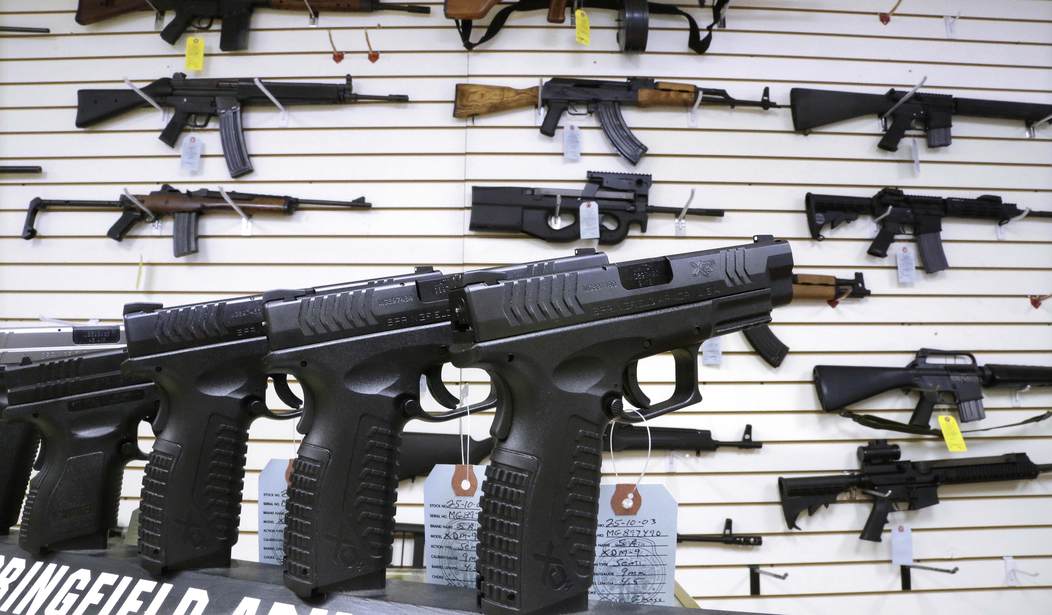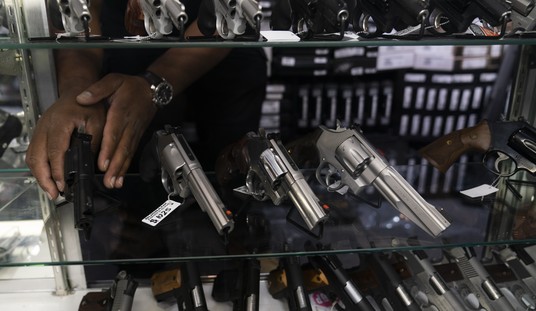Maybe it's just me, but if you're going to lament a so-called gun death, the race of the deceased is of little matter. A life is a life and as all lives are generally equally precious, their race is irrelevant. I make exceptions for the worst among us, but that, too crosses any racial boundaries.
But apparently, a lot of people think it matters.
To be fair, if we were to somehow reduce gun-related deaths among the black community, we'd undermine a significant portion of those fatalities.
Yet there are a lot of misconceptions about those deaths.
When the subject of gun violence in Black communities comes up, what usually comes to mind are images of big-city streets and apartment housing — not rural communities.
But several studies show that the sharp rise in Black victims of gun-related deaths in recent decades is happening in rural areas and small towns, mostly in the Deep South. Since 2018, the data show, Black youth in rural areas have been dying from firearms as often as their urban peers.
OK, but what kind of "dying from firearms" are we talking about here?
There's a big difference between being killed in a drive-by in Compton and taking your own life in a rural Alabama trailer park, yet we also know that these are typically lumped together as "gun deaths," thus creating the illusion of a bigger problem with guns than there actually is.
The refusal to separate those into their correct categories is a major problem because each has its roots in a completely different pathology.
Of the 20 towns and cities with the highest rates of shootings, more than half were in the South, home to a majority of Black Americans. Between 2013 and 2024, studies show, the rate of gunshot victims in places like Alabama and Mississippi was six times higher than in cities like New York or Los Angeles.
Again, how many are homicides versus suicides, for one thing?
For another, let's also remember the way rates work. If you have a population of 100 people and there's one shooting death, that's a per capita rate of 1,000. It looks ridiculously high--it's why we look at trends and year-over-year rates to get a better picture of the issue, but it's still imperfect--but the issue isn't nearly as terrifying as it may seem.
While that's the closest we can get to measuring very different population sizes, it's an imperfect comparison for just those reasons.
David Hemenway, professor of health policy at Harvard University’s T.H. Chan School of Public Health, ties the violence directly to the nation’s embrace of guns and legislation protecting gun manufacturers.
“At the federal level, our gun laws are now much weaker than they were in 1999. We eliminated the assault weapons ban,” says David Hemenway, professor of health policy at Harvard University’s T.H. Chan School of Public Health. “We gave the gun industry incredible protections against lawsuits. I don’t know of any other industry that is so well protected against tort liability.”
It's really not a mystery why Harvard took a state college reject like David Hogg and made him an Ivy League guy, now is it?
First, let's gloss over the claim that gun laws are so much weaker than they were in 1999. I'm doing that because Cam already took down a similar claim last week and there's really not a lot of reason to retread the same ground.
But I do want to point out that the gun industry's "incredible protections against lawsuits" really is nothing more than an attempt to shield them from being blamed for what third parties do with their products. If they break the law, they can be sued. If they screw up in the manufacturing of a firearm, they can be sued. If some two-bit punk shoots up his neighborhood with their product but they had nothing to do with it, they can't be sued.
Trust me, if you started trying to sue Ford and Toyota for the actions of drunk drivers, you'd see similar legislation proposed eventually protecting them from stupid lawsuits.
How is that difficult to comprehend?
Research has tied high rates of rural gun violence to a range of factors, from lack of opportunity to lax gun laws. But Black residents have also seen their communities slowly disappear, adding to a sense of hopelessness.
“High rates of violence are often a symptom of a larger root cause, and I always go back to economic development,” Stacy Grundy, a public health practitioner who has studied rural communities, told The Trace, a nonprofit news website reporting on gun violence. “Most of the kids who are interested in college move away and do not return because there is not an industry to return to, and the economic opportunities for the young people who stay are now foregone.”
Firearm injuries, including homicides, suicides, and unintentional injuries, were the leading cause of death among children and teens ages one to 19 in 2020 and 2021, according to the Centers for Disease Control. And a disproportionate number of those youths were Black.
Now, economic development may well play a role. The link between poverty and violence has long been established, though I'm starting to become less convinced that poverty causes violence. It's possible the reason some people are violent are the same pathologies that lead them to be in poverty.
But now we have the canard about guns being the leading cause of death among children. It's not. Again, they omit children under one--who are most definitely children--and include legal adults aged 18 and 19. Those are also the ages when people are most likely to be involved in gang culture, violent crime, getting into altercations absent other criminal actions, and a host of other things.
Including them has always been another statistical trick to create an issue where there isn't one.
And again, this particular data point doesn't separate homicides from suicides.
Look, I'm not saying we shouldn't address the issue, but this isn't about addressing the issue. This is a push to restrict guns in places where people don't have an interest in restricting guns. This is about making guns look like the problem without having to acknowledge that gun control has failed pretty much everywhere.








Join the conversation as a VIP Member